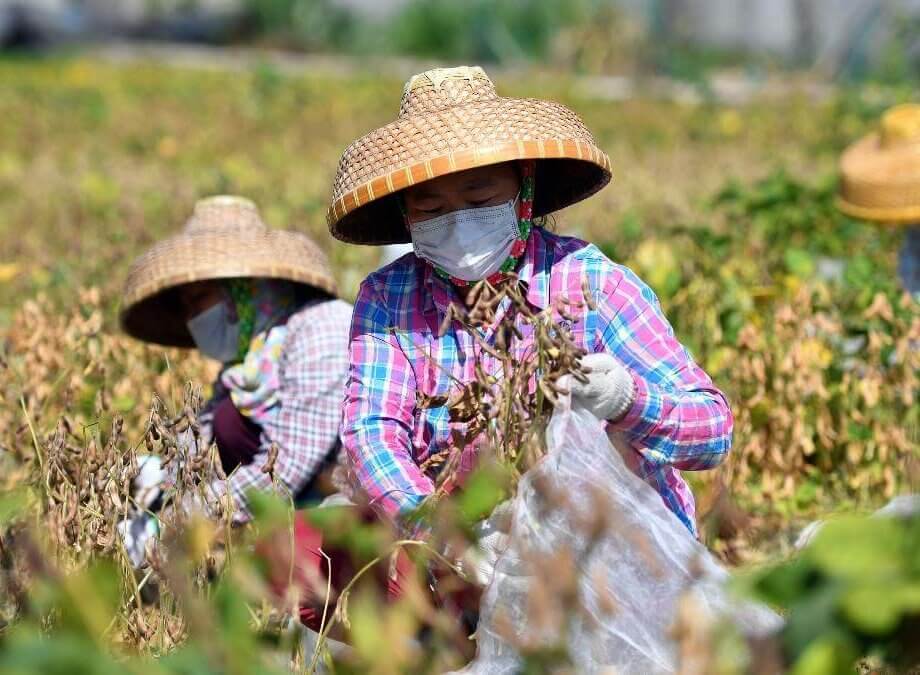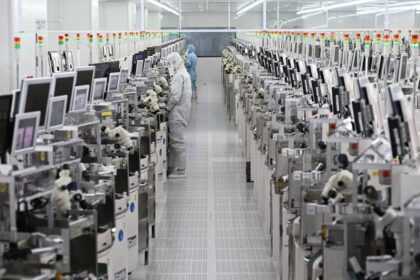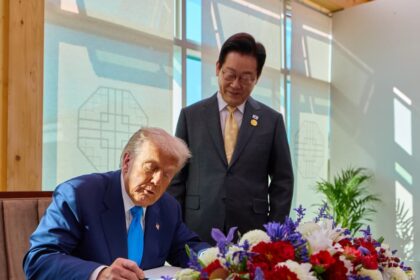Vietnam’s Remarkable Food Self-Sufficiency: A Global Perspective
In a world where global trade disruptions, climate shocks, and geopolitical tensions increasingly threaten food security, a new study published in the journal Nature Food has spotlighted Vietnam as one of the world’s most food-self-sufficient nations. The research, conducted by scientists from the University of Göttingen in Germany and the University of Edinburgh in Scotland, analyzed the food production capabilities of 186 countries and territories, measuring their ability to meet domestic dietary needs without relying on imports. Vietnam’s strong performance, ranking just behind Guyana and alongside China, underscores the country’s robust agricultural sector and its strategic importance in global food security debates.
- Vietnam’s Remarkable Food Self-Sufficiency: A Global Perspective
- How Was Food Self-Sufficiency Measured?
- Vietnam’s Agricultural Strengths: The Foundation of Resilience
- Global Food Self-Sufficiency: A Stark Divide
- Why Is Complete Self-Sufficiency So Rare?
- Vietnam’s Dual Role: Export Powerhouse and Domestic Safeguard
- Regional and Global Implications: Lessons from the Study
- Comparing Vietnam to Other Nations: A Global Snapshot
- Challenges and Opportunities Ahead
- In Summary
How Was Food Self-Sufficiency Measured?
The study’s methodology was both comprehensive and rigorous. Researchers used data from the United Nations Food and Agriculture Organization (FAO) and compared each country’s domestic food production to the nutritional requirements outlined in the World Wildlife Fund’s Livewell diet. This diet emphasizes a balanced intake of seven essential food groups: cereals, vegetables, fruit, starchy staples, dairy products, meat, and fish. The analysis asked a critical question: If global food trade were to suddenly stop, which countries could feed their populations using only what they produce at home?
The findings were striking. Only Guyana, a small South American nation with a population of around 800,000, achieved full self-sufficiency across all seven food groups. China and Vietnam followed closely, each able to meet domestic demand in six out of seven categories. This places Vietnam in a rarefied group of nations capable of withstanding major interruptions to food imports and exports.
Vietnam’s Agricultural Strengths: The Foundation of Resilience
Vietnam’s high ranking is attributed to its diverse and productive agricultural sector. The country consistently achieves high yields in key areas such as:
- Rice: Vietnam is one of the world’s top rice producers and exporters, with the Mekong and Red River deltas serving as major rice bowls.
- Fruit and Vegetables: The country’s tropical climate supports a wide variety of fruits (like dragon fruit, lychee, and mango) and vegetables, both for domestic consumption and export.
- Fishery Products: Vietnam is a global leader in aquaculture, particularly in the production of pangasius and shrimp.
- Meat and Starchy Staples: Livestock farming and the cultivation of crops like cassava and sweet potatoes further bolster food security.
This robust production capacity not only supports Vietnam’s domestic needs but also positions the country as a major food exporter. According to VietnamPlus, this dual strength—serving both domestic and international markets—enhances Vietnam’s resilience to global food trade shocks.
Global Food Self-Sufficiency: A Stark Divide
The study’s global analysis revealed a stark contrast in food resilience. Out of 186 countries, 154 were found to be self-sufficient in only two to five food groups. Alarmingly, several nations—including Afghanistan, the United Arab Emirates, Iraq, Macau (China), Qatar, and Yemen—were unable to domestically meet the demand for any of the seven categories. In these countries, over 50% of food supplies depend on imports, making them highly vulnerable to supply chain disruptions, trade restrictions, or geopolitical crises.
Dr. Jonas Stehl, the study’s lead author and a researcher at the University of Göttingen, emphasized the risks:
“Low self-sufficiency and overdependence on a few countries for imports threaten their capability to respond to global shocks, particularly for small states.”
These findings are especially relevant in the wake of recent global events such as the COVID-19 pandemic and the war in Ukraine, both of which exposed the fragility of long food supply chains and the dangers of overreliance on international trade.
Why Is Complete Self-Sufficiency So Rare?
Guyana’s unique achievement of full self-sufficiency is largely due to its favorable climate, fertile soils, and a balanced agricultural system that supports year-round farming across all food groups. In contrast, even agricultural powerhouses like China and Vietnam fall short in one category—often dairy—due to climatic or structural constraints.
Most countries face significant challenges in achieving self-sufficiency in certain food groups. For example:
- Dairy: Many countries, especially in sub-Saharan Africa and Oceania, struggle to meet domestic dairy needs.
- Fish and Seafood: Only about one in four countries are self-sufficient in fish, with the majority unable to cover even half of their needs.
- Vegetables and Plant-Based Proteins: Less than half of countries produce enough legumes, nuts, seeds, or vegetables to meet domestic demand.
These gaps are often filled through imports, but this creates vulnerabilities if trade is disrupted. As BBC Science Focus notes, low self-sufficiency is not inherently negative—some countries lack the natural resources for certain crops, and importing food can be more cost-effective. However, the downside is reduced resilience in the face of global shocks.
Vietnam’s Dual Role: Export Powerhouse and Domestic Safeguard
Vietnam’s ability to balance its role as a leading food exporter with the maintenance of a diverse and sustainable agricultural system for domestic needs is a key factor in its resilience. According to Vietnam News, this dual capacity positions the country to better navigate potential shocks in global food trade in the years ahead.
Vietnam’s government has long prioritized food security, investing in agricultural research, infrastructure, and rural development. The country’s farmers have adopted innovative techniques to boost yields and diversify crops, while policies encourage both export growth and the safeguarding of domestic supply. This approach has paid dividends, especially during periods of global uncertainty.
Regional and Global Implications: Lessons from the Study
The study’s findings have broad implications for policymakers and food security experts worldwide. Key takeaways include:
- Trade Diversification: Countries that rely heavily on a single trade partner for food imports are especially vulnerable. Diversifying trade relationships can enhance resilience.
- Investment in Domestic Production: Strengthening local agriculture, especially in underperforming food groups, can reduce dependency and improve national food security.
- Climate Adaptation: As climate change intensifies, countries must invest in climate-resilient crops and sustainable farming practices to safeguard future food supplies.
- International Cooperation: While self-sufficiency is valuable, international food trade and cooperation remain essential for healthy and sustainable diets, especially for countries with limited agricultural potential.
Alexander Vonderschmidt, a co-author of the study and PhD researcher at the University of Edinburgh, highlighted the importance of open trade and innovation:
“Climate shocks are reshaping the agriculture sector and will continue to intensify. Open trade and innovation are essential to secure healthy, low-carbon diets.”
Comparing Vietnam to Other Nations: A Global Snapshot
Vietnam’s near-complete self-sufficiency stands in contrast to many other countries and regions:
- Guyana: The only country fully self-sufficient in all seven food groups, thanks to its small population and favorable agricultural conditions.
- China: Matches Vietnam in self-sufficiency across six categories, reflecting its vast agricultural resources but also its challenges in dairy production.
- Europe and South America: Generally more self-sufficient than other regions, especially in meat and dairy, but often fall short in plant-based proteins and vegetables.
- Small Island States and Gulf Countries: Among the least self-sufficient, often unable to meet domestic demand in any food group and highly dependent on imports.
Economic unions, such as the Gulf Cooperation Council, also struggle with self-sufficiency, often excelling in only one or two food groups. This highlights the importance of both regional cooperation and national strategies tailored to local conditions.
Challenges and Opportunities Ahead
While Vietnam’s achievements are impressive, the study’s authors caution that current production volumes do not necessarily reflect a country’s full potential. Factors such as policy incentives, economic shifts, and technological innovation could enable countries to improve self-sufficiency in the future. Projections to 2032 suggest that most countries can make gains, particularly in animal-source foods and plant-based staples, though progress will vary by region and food group.
For Vietnam, continued investment in sustainable agriculture, climate adaptation, and rural development will be crucial. The country’s experience offers valuable lessons for others seeking to strengthen food security in an uncertain world.
In Summary
- Vietnam ranks among the world’s most food-self-sufficient nations, able to meet domestic demand in six of seven essential food groups.
- Only Guyana achieves full self-sufficiency across all categories, with China and Vietnam close behind.
- The study highlights global disparities, with many countries unable to meet domestic needs in even a single food group.
- Vietnam’s robust agricultural sector and balanced approach to exports and domestic supply underpin its resilience.
- Trade diversification, investment in local production, and climate adaptation are key strategies for improving food security worldwide.
- International cooperation remains essential, as no country is immune to the risks posed by global shocks and climate change.












